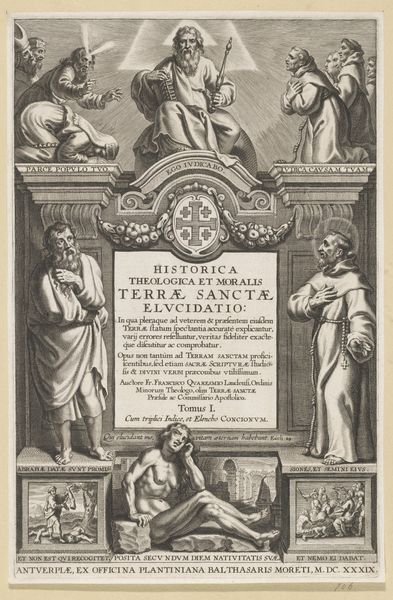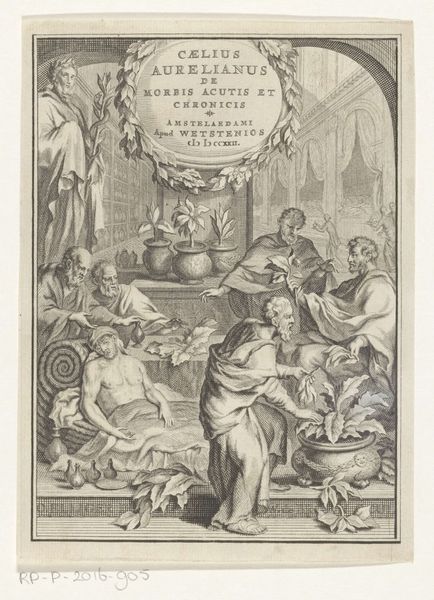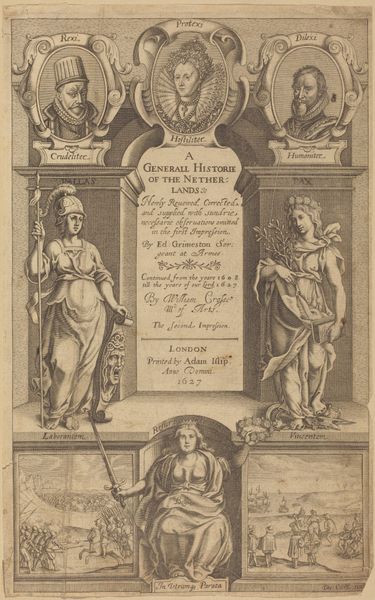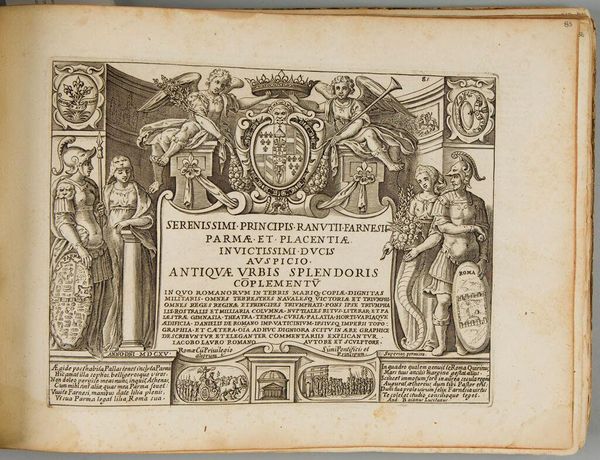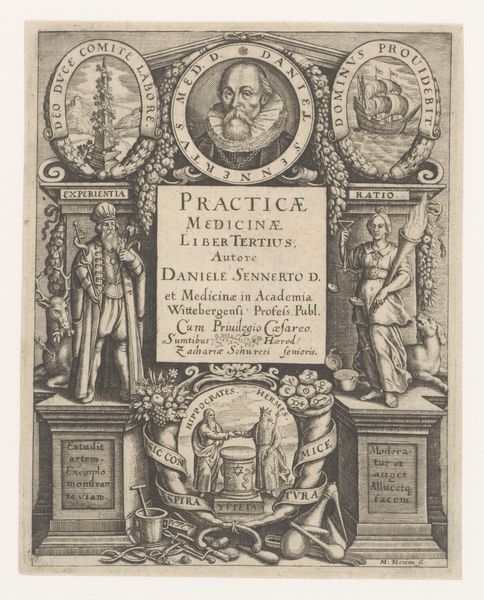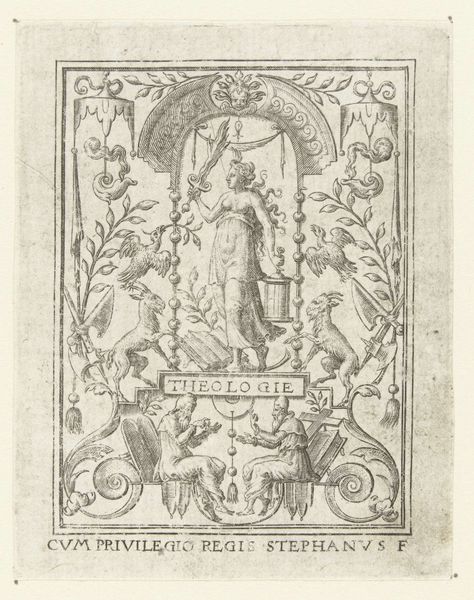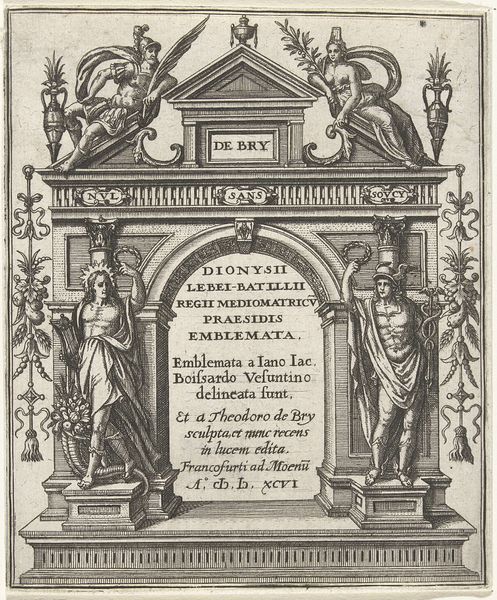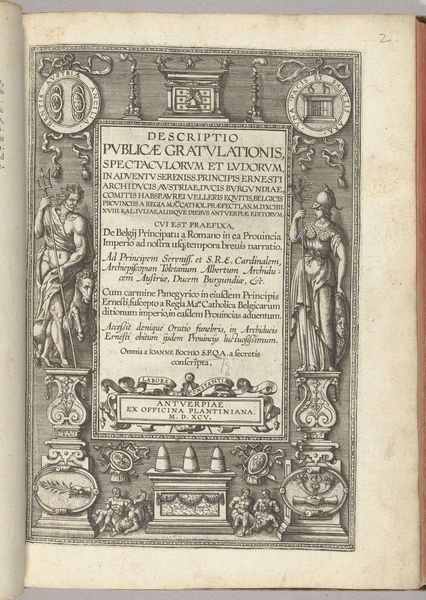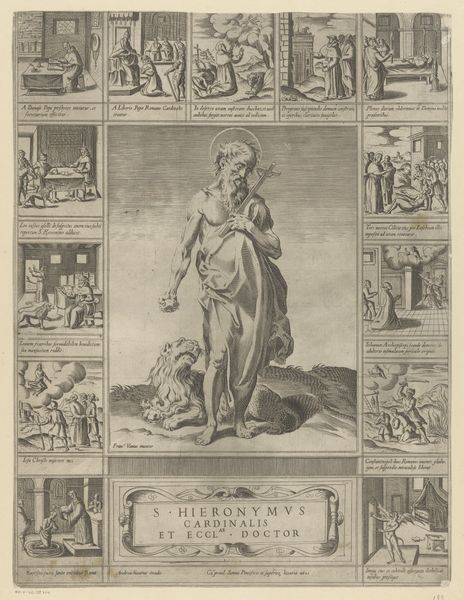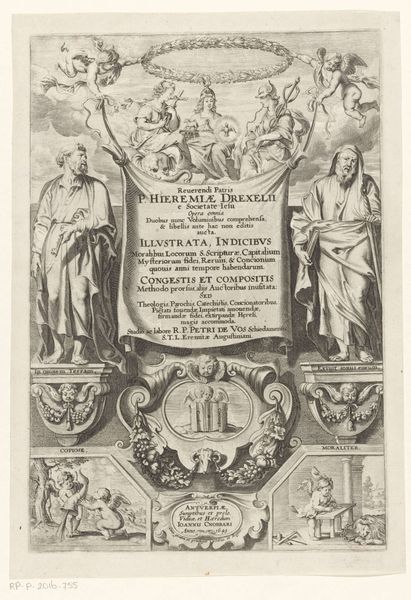
graphic-art, print, engraving
#
portrait
#
graphic-art
#
baroque
# print
#
pen illustration
#
pen sketch
#
old engraving style
#
history-painting
#
engraving
Dimensions: height 173 mm, width 110 mm
Copyright: Rijks Museum: Open Domain
Curator: Here at the Rijksmuseum, we have before us "Mars en portret Tacitus," an engraving rendered in 1645 by Cornelis van Dalen I. Editor: My initial feeling? Austere power. It’s very striking, very… structured. All those straight lines of the weapons converging, framing the text, the subjects posed at very static, powerful stances…it’s making a statement about the solidity of this man, of Tacitus' historical importance. Curator: Precisely. Considering van Dalen’s method, it is interesting to examine the implications of reproducibility here. The creation of the engraving necessitated tools and techniques that involved meticulous labor: chisels, burins, the preparation of the metal plate. This mode of graphic art created the potential to distribute portraits across the printed page in contrast to individualized painted images only accessible to patrons or high society. Editor: Yes, but the *iconography*! Tacitus, portrayed as both the God of War, Mars, holding the sword – symbolizing might, military power—and also in that oval cameo below as the “Citizen of Rome.” These contrasting symbols and iconographic cues point to two vital parts of the culture: on one hand military force, and on the other hand civic duty and intellect, embodied in Tacitus the historian. They both create his enduring legacy. Curator: Right. So how are those roles intertwined? Consider this image less as just a portrait but as a material object that was bought, sold, traded, and potentially bound with other similar prints into composite atlases, historical accounts, scientific compendiums. What meanings were produced for the print's consumers through repeated usage? Were their experiences mediated through social hierarchies and other networks that can also influence our understanding today? Editor: Absolutely, and by understanding these ingrained images we perceive our world, how we understand order and justice. You see Tacitus elevated in symbolic attire, it reinforces what Roman values *meant* at the time and speaks to the role imagery has to connect us through a cultural memory. Curator: I think we see eye-to-eye. Editor: Indeed. It is as though examining material production opens a door and the iconography illuminates what we discover.
Comments
No comments
Be the first to comment and join the conversation on the ultimate creative platform.
